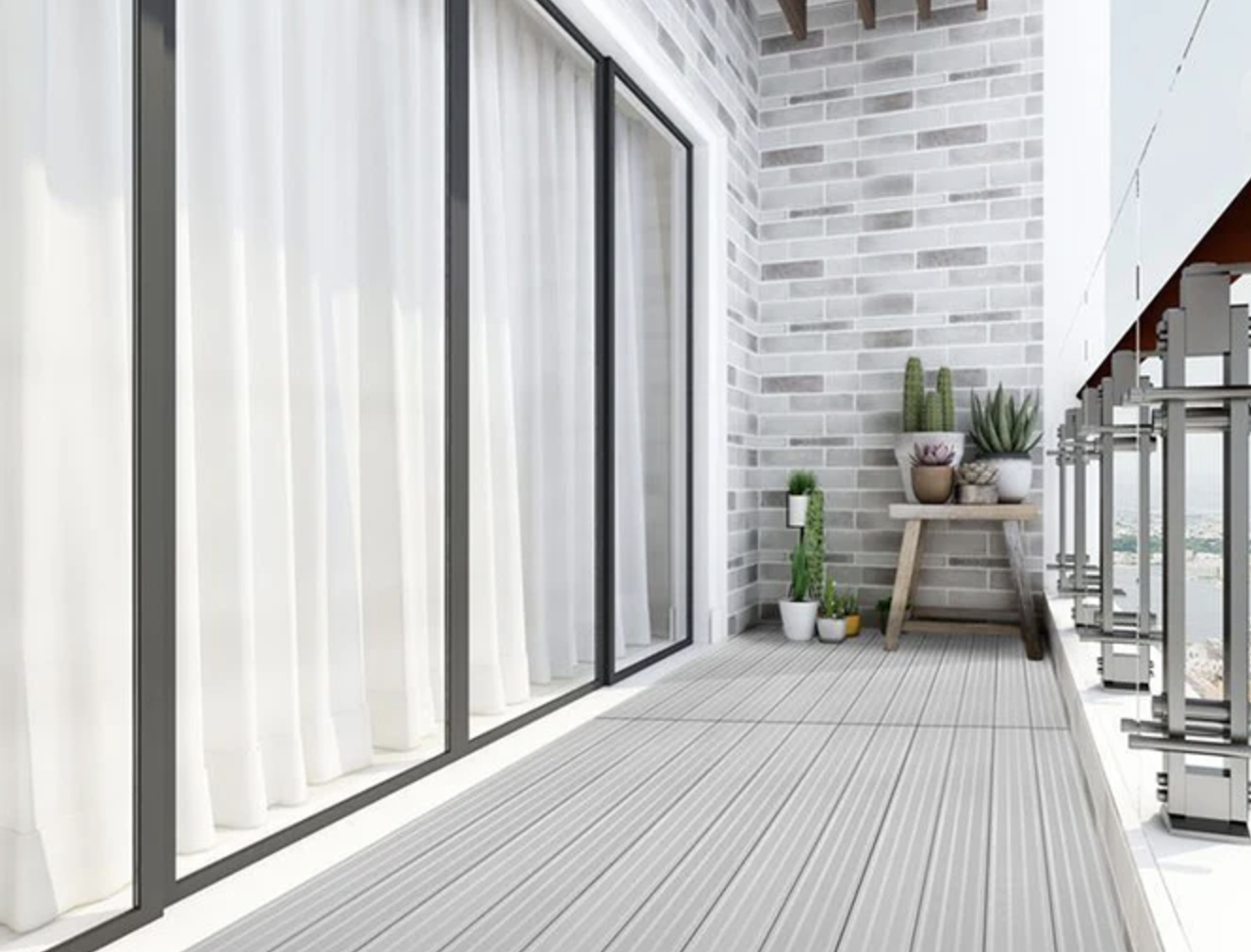When planning to enhance your outdoor space with a deck, selecting the right material is crucial for longevity, aesthetics, and maintenance.
The primary contenders in the decking arena are aluminium, plastic (composite), and timber.
Each material offers distinct advantages and considerations.
This comprehensive guide delves into the features, benefits, and potential drawbacks of each, assisting you in making an informed decision.

Aluminium Decking
Overview
Aluminium decking is a modern solution known for its durability and low maintenance.
Unlike traditional materials, aluminium doesn't warp, crack, or rot, making it an excellent choice for various climates.
Advantages
-
Durability: Aluminium is resistant to rust, corrosion, and insect damage, ensuring a long lifespan.
-
Low Maintenance: Requires minimal upkeep; occasional cleaning suffices to maintain its appearance.
-
Fire Resistance: Aluminium is non-combustible, providing an added safety layer, especially in fire-prone areas.
-
Eco-Friendly: Fully recyclable, making it an environmentally responsible choice.
-
Aesthetic Appeal: Offers a sleek, modern look that complements contemporary designs.
Considerations
-
Cost: Higher initial investment compared to timber and plastic decking.
-
Heat Retention: Can become hot under direct sunlight, though some designs mitigate this issue.
-
Noise: May produce a hollow sound when walked upon, but this can be reduced with proper installation.
Trade Warehouse Aluminium Decking
At Trade Warehouse, we offer premium aluminium decking solutions designed for durability and style. These 3.6m Aluminium Decking Boards feature:
-
Non-Combustible Material: Ensures safety and compliance with fire regulations.
-
Slip-Resistant Surface: Provides a secure footing, even in wet conditions.
-
Integrated Drainage System: Prevents water accumulation, protecting the deck's integrity.
-
Easy Installation: Lightweight boards with interlocking systems simplify the installation process.
Plastic (Composite) Decking
Overview
Composite decking combines wood fibres and plastic, offering the appearance of timber with enhanced durability.
It's designed to resist common issues associated with wood, such as rot and insect damage.
Advantages
-
Low Maintenance: Doesn't require staining or sealing; regular cleaning keeps it looking new.
-
Durability: Resistant to rot, splintering, and insect damage.
-
Variety: Available in numerous colours and textures, allowing for customization.
-
Eco-Friendly Options: Many composites use recycled materials, reducing environmental impact.
Considerations
-
Cost: Generally more expensive than timber but less than aluminium.
-
Heat Retention: Can become hot under direct sunlight.
-
Fading and Staining: Lower-quality composites may fade or stain over time.
-
Weight: Heavier than timber, which may require a sturdier substructure.
Timber Decking
Overview
Timber decking offers a natural aesthetic that's hard to replicate.
It's available in various wood types, each with unique characteristics.
Advantages
-
Aesthetic Appeal: Provides a warm, natural look that blends seamlessly with outdoor environments.
-
Cost: Lower initial cost compared to aluminium and composite decking.
-
Versatility: Can be stained or painted to achieve the desired appearance.
Considerations
-
Maintenance: Requires regular staining, sealing, and cleaning to prevent rot and insect damage.
-
Durability: Susceptible to warping, cracking, and splintering over time.
-
Environmental Impact: Depending on the wood source, it may contribute to deforestation.
-
Fire Risk: Wood is combustible, posing a fire hazard.
Comparative Analysis
Durability and Lifespan
-
Aluminium: Offers a lifespan of 30-50 years with minimal maintenance.
-
Composite: Typically lasts 25-30 years, depending on quality and maintenance.
-
Timber: Lifespan varies; softwoods may last 10-15 years, while hardwoods can last up to 25 years with proper care.
Maintenance Requirements
-
Aluminium: Low maintenance; periodic cleaning is sufficient.
-
Composite: Requires regular cleaning to prevent mould and mildew.
-
Timber: Needs regular staining, sealing, and inspections for rot and pests.
Environmental Impact
-
Aluminium: Fully recyclable; production can be energy-intensive.
-
Composite: Often made from recycled materials; not always recyclable at end of life.
-
Timber: Renewable resource; sustainability depends on sourcing practices.
Cost Considerations
-
Aluminium: Highest initial cost but low lifetime maintenance expenses.
-
Composite: Moderate initial cost with low to moderate maintenance costs.
-
Timber: Lowest initial cost but higher maintenance expenses over time.
Making the Right Choice
Selecting the appropriate decking material depends on various factors:
-
Budget: Consider both initial investment and long-term maintenance costs.
-
Aesthetic Preferences: Choose a material that complements your design vision.
-
Climate: Account for local weather conditions that may affect material performance.
-
Maintenance Commitment: Assess how much time and effort you're willing to invest in.
When it comes to decking, selecting the right material is a decision that requires careful consideration of durability, maintenance, aesthetics, environmental impact, and cost. Each material—aluminium, composite (plastic), and timber—offers unique advantages and trade-offs that cater to different needs and preferences.

